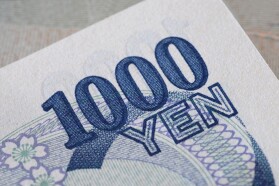
The Japanese yen is trading relatively flat against many of its major currency counterparts on Tuesday. The yen has been struggling to find direction so far this week as household spending data disappointed and investors try to weigh the central bankâs decision to embark upon a policy of yield-curve control. Although Japan was able to flatten the coronavirus curve, it has reported a renewed uptick in confirmed cases. Will the worldâs third-largest economy rebound, or could a potential second wave stop growth?
According to the Ministry of Internal Affairs and Communications, household spending fell at an annualized rate of 16.2%, down from the 11.1% drop in the previous month. This is the eighth consecutive monthly decline and is the sharpest decrease on record. The market had penciled in a reading of -12.2%. Leading the steep declines were apparel and footwear (-38.3%), culture and reaction (-37.9%), housing (-26%), medical care (-7%), and utilities (-5.9%).
And this could be the new norm as surveys have repeatedly found consumers to be pessimistic about current and future economic conditions.
The Coincident Index, which measures factory output and employment, tumbled from 80.1 in April to a preliminary reading of 74.6 in May. The Leading Economic Index edged up to 79.3 in May, up from 77.7 in April.
Average cash earnings slipped 2.1% year-over-year, worse than the median estimate of -1.1%.
Overall, analysts are concerned about the sluggish pace of the recovery. Despite Tokyo triggering relief and stimulus measures and the Bank of Japan (BoJ) maintaining an accommodative policy, the Japanese economy has failed to aggressively grow the economy like its regional counterparts.
The latest data dumps are not impacting the central bankâs view that the economy will rebound later this year. At the same time, the BoJ, which has reaffirmed policymakers and the public that it is ready to unleash additional support measures, is preparing to participate in a yield-curve control policy.
BoJ head Haruhiko Kuroda aims to keep the 10-year government bond yield at near zero. But while he is already reaching this target, experts agree that it would extend an economic headache to the country. Some other bonds have climbed above his threshold, which has yet to trigger a response from Kuroda.
Japan is beginning to experience a rise in COVID-19 cases after flattening the curve in May. The number of daily confirmed cases has climbed to a two-month high of 240, bringing the total figure to just under 20,000. If the trend continues, then the consequences for a fragile economy would be most pronounced.
The USD/JPY currency pair rose 0.11% to 107.51, from an opening of 107.39, at 16:51 GMT on Tuesday. The EUR/JPY dipped 0.03% to 121.40, from an opening of 121.45.
If you have any questions, comments, or opinions regarding the Japanese Yen, feel free to post them using the commentary form below.